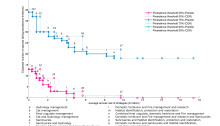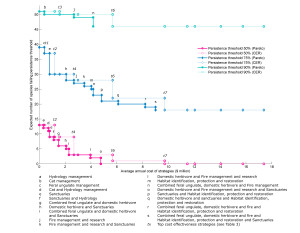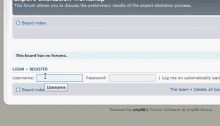Our manuscript on how complementarity can help saving more species per dollar spent is available online. If you are interested in cost-effectiveness analysis, PPP (Project Prioritisation Protocol), priority threat management, expert elicitations, or the Pilbara, have a look:
Chades, I., Nicol, S., van Leeuwen, S., Walters, B., Firn, J., Reeson, A., Martin, T. G. . and Carwardine, J. (2014), Benefits of integrating complementarity into priority threat management. Conservation Biology. doi: 10.1111/cobi.12413 (abstract) (request pdf)
In Tulloch et al (2013), we studied how complementarity could help choosing indicator species to improve our monitoring power, Chades et al (2014) explores further this idea in the context of priority threat management. Feel free to download the Pilbara report for details about the study.
Priority threat management process requires a strong collaborative team to be successful. This manuscript is a great example of a work that would not have been possible without the essential contribution of all authors.
Conservation decision tools based on cost-effectiveness analysis are used to assess threat management strategies for improving species persistence. These approaches rank alternative strategies by their benefit to cost ratio but may fail to identify the optimal sets of strategies to implement under limited budgets because they do not account for redundancies. We devised a multiobjective optimization approach in which the complementarity principle is applied to identify the sets of threat management strategies that protect the most species for any budget. We used our approach to prioritize threat management strategies for 53 species of conservation concern in the Pilbara, Australia. We followed a structured elicitation approach to collect information on the benefits and costs of implementing 17 different conservation strategies during a 3-day workshop with 49 stakeholders and experts in the biodiversity, conservation, and management of the Pilbara. We compared the performance of our complementarity priority threat management approach with a current cost-effectiveness ranking approach. A complementary set of 3 strategies: domestic herbivore management, fire management and research, and sanctuaries provided all species with >50% chance of persistence for $4.7 million/year over 20 years. Achieving the same result cost almost twice as much ($9.71 million/year) when strategies were selected by their cost-effectiveness ranks alone. Our results show that complementarity of management benefits has the potential to double the impact of priority threat management approaches.



